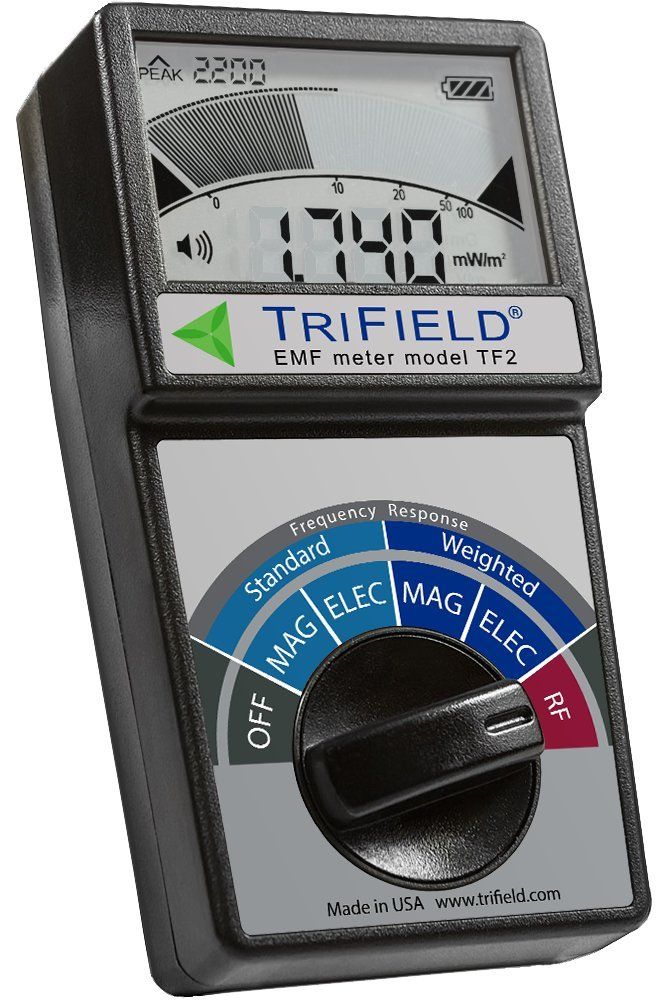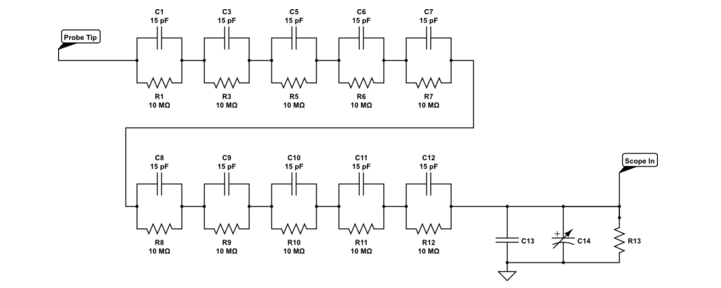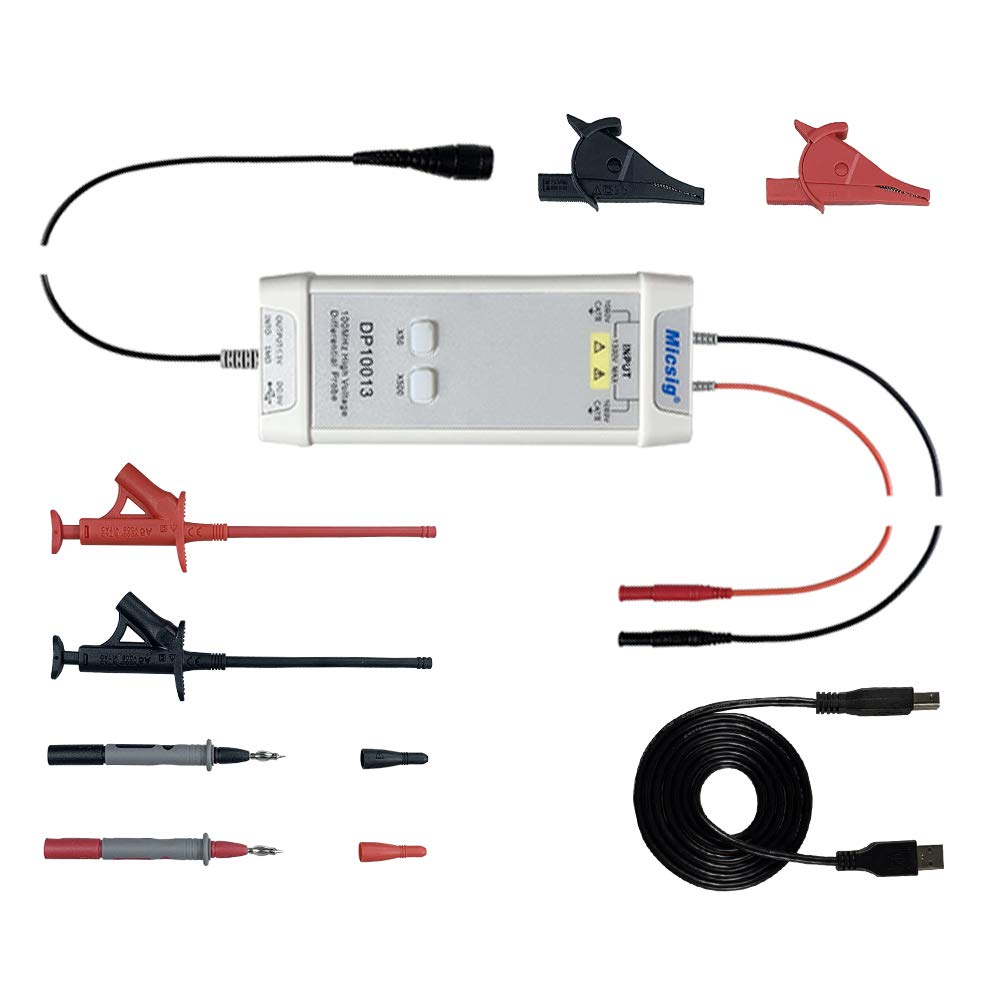Oscilloscopes, Measurements & Safety
- Economical Scopes
- Economical Oscilloscopes: A Comparison of Key Features and Capabilities
- Frequency definition and the frequency formula
- High Voltage Differential Probes
- High Voltage Differential Probes: Micsig DP10013 and Alternatives
- DIY HV Isolated Probe
- HV Oscilloscope Probes
- Current & EMF Probes
Economical Scopes
Economical Oscilloscopes: A Comparison of Key Features and Capabilities
Oscilloscopes are vital tools for visualizing and analyzing electrical signals in electronic circuit development and troubleshooting. For hobbyists, makers, and even small labs, there are several economical options on the market that offer advanced features while remaining budget-friendly. In this article, we explore several popular models, including the Siglent SDS1104X-E and Rigol DS1054Z, focusing on their performance, usability, and value for money.
1. Siglent SDS1104X-E Digital Oscilloscope
The Siglent SDS1104X-E is a four-channel oscilloscope with a 100 MHz bandwidth and a sample rate of 1 GSa/s (gigasamples per second). It offers an exceptional combination of features for its price, making it a popular choice among both enthusiasts and professionals.
-
Bandwidth and Sample Rate: With a bandwidth of 100 MHz, this oscilloscope is suitable for observing high-speed digital signals and analyzing analog circuits at frequencies up to 100 MHz. The 1 GSa/s sample rate ensures that you get a detailed representation of the waveform, which is crucial for accurately capturing fast transitions and details in the signal.
-
Trigger Modes: The SDS1104X-E provides multiple trigger modes, including edge, pulse, video, slope, and more. These trigger options help you isolate specific events in the signal, making troubleshooting easier.
-
Webserver Capability: One standout feature of the Siglent SDS1104X-E is its Ethernet port, which enables you to connect it to a local network. The built-in webserver allows you to access and control the oscilloscope from a browser on your local network, making it convenient for remote monitoring and adjustments.
-
Channel Voltage Limits: The input voltage range for each channel is up to 300V peak, which is sufficient for most low- to mid-voltage projects. Safety features include overvoltage protection to prevent damage to the oscilloscope.
2. Rigol DS1054Z Digital Oscilloscope
The Rigol DS1054Z is another four-channel oscilloscope that is well-regarded for its performance and price point. It has a 50 MHz bandwidth, which can be upgraded to 100 MHz via software, and a sample rate of 1 GSa/s.
-
Bandwidth and Sample Rate: The default 50 MHz bandwidth is sufficient for many low- and mid-frequency applications, and the 1 GSa/s sample rate ensures that signals are captured accurately. For users needing more bandwidth, Rigol offers an upgrade that unlocks up to 100 MHz, providing added flexibility.
-
Trigger Modes: The DS1054Z includes various trigger options such as edge, pulse, and video. The advanced trigger modes allow for better isolation of specific signal characteristics, making it easier to diagnose issues.
-
Network Connectivity: Although the DS1054Z lacks a built-in webserver, it does have USB and LAN connectivity, allowing you to connect the oscilloscope to a computer for remote control and data acquisition using Rigol's software.
-
Channel Voltage Limits: The channel voltage range is similar to the Siglent at 300V peak, ensuring safe operation for most electronic projects. Overvoltage protection is also included to protect the oscilloscope from accidental high-voltage spikes.
3. Owon VDS1022I PC-Based Oscilloscope
The Owon VDS1022I is a more economical option that provides a 25 MHz bandwidth and connects directly to your PC, making it a convenient and cost-effective choice for users who already use a computer as their main workstation.
-
Bandwidth and Sample Rate: The 25 MHz bandwidth is suitable for low-frequency analog and digital signals, while the 100 MSa/s (megasamples per second) sample rate is sufficient for capturing basic waveforms and signals in most DIY projects.
-
Trigger Modes: The Owon VDS1022I offers basic trigger modes, including edge and pulse, allowing users to capture signals at specific intervals or events. Although not as advanced as higher-end oscilloscopes, the trigger options are adequate for most basic testing needs.
-
PC Integration: Since this is a PC-based oscilloscope, the interface is dependent on the software running on the computer. The software provides a decent level of customization and visualization for analyzing signals.
-
Channel Voltage Limits: This oscilloscope has an input voltage range of 400V peak, making it suitable for a wider range of voltage levels compared to other budget oscilloscopes.
Choosing the Right Oscilloscope for Your Needs
When selecting an oscilloscope, it's important to consider a few key factors:
-
Bandwidth and Sample Rate: The bandwidth of an oscilloscope determines the maximum frequency of a signal it can measure accurately. As a general rule of thumb, you should choose an oscilloscope with a bandwidth at least 5 times higher than the highest frequency of the signals you plan to measure. The sample rate determines how frequently the signal is sampled, and a higher sample rate provides a more accurate representation of the waveform. For example, for observing signals at 20 MHz, a 100 MHz oscilloscope like the Siglent SDS1104X-E is a good choice.
-
Number of Channels: Depending on the complexity of your circuits, you may need two, four, or even more channels. Both the Siglent SDS1104X-E and Rigol DS1054Z offer four channels, allowing you to observe multiple signals simultaneously.
-
Trigger Modes: Advanced trigger modes allow you to isolate specific parts of a signal for closer inspection. Edge triggering is the most basic type, while other modes like pulse or slope triggering help capture more complex behaviors.
-
Connectivity and Remote Access: For those who want to work remotely or need access to the oscilloscope via a local network (LAN), the Ethernet port and webserver capability of the Siglent SDS1104X-E make it a standout choice. This allows users to monitor and control the oscilloscope from any device on the same network, providing significant convenience.
-
Safety and Channel Voltage Limits: Oscilloscopes have voltage limits for each channel, typically 300V peak for many budget models. Make sure the oscilloscope can safely handle the voltage levels in your project to avoid damaging the device. Always pay attention to the voltage limits, especially when working with power circuits.
Conclusion
Economical oscilloscopes such as the Siglent SDS1104X-E, Rigol DS1054Z, and Owon VDS1022I offer a range of features suitable for hobbyists and small labs looking for cost-effective solutions. Choosing the right oscilloscope depends on the signals you plan to analyze, the level of accuracy needed, and whether features like remote access or multiple channels are important for your application.
With options like Ethernet connectivity, advanced trigger modes, and high sample rates, these oscilloscopes provide significant value for money, allowing you to capture and analyze signals effectively without a huge investment. The Siglent and Rigol models, in particular, are well-regarded for balancing price and functionality, while the Owon VDS1022I offers a very economical entry point for those who prefer using a PC-based setup.
Frequency definition and the frequency formula
Source: https://www.omnicalculator.com/physics/frequency
Have a look at the following model of a wave; it will help you understand the terms used in the frequency definition below it.

Frequency is the number of completed wave cycles per second. In other words, frequency tells us how many wave crests pass a given point in a second.
This frequency definition leads us to the simplest frequency formula:
f = 1 / T.
f denotes frequency and T stands for the time it takes to complete one wave cycle measured in seconds.
The SI frequency unit is Hertz (Hz), which equals 1/s (one cycle per second). Other frequency units include millihertz (mHz), kilohertz (kHz), megahertz (MHz), gigahertz (GHz), and terahertz (THz).
Frequency equation from the wavelength
Have a look at another picture which will allow us to see that frequency is connected to wavelength. Wavelength is the distance between two adjacent crests (or troughs). In other words - it is the length of one wave cycle. The longer the wavelength, the lower the frequency:

Another fact we need - how fast the waves travel at (wave velocity) determines how many of them will pass a given point per second. This means the higher the wave velocity, the higher the frequency.
These two relationships between frequency and wavelength (λ), and between frequency and velocity (v), bring us to the following frequency equation:
f = v / λ.
High Voltage Differential Probes
High Voltage Differential Probes: Micsig DP10013 and Alternatives
High voltage differential probes are essential tools for measuring signals in systems where the signal reference point is not directly connected to the ground, such as in floating ground circuits. These probes are particularly important for safely analyzing high-voltage systems, such as the secondary side of Stanley Meyer's VIC (Voltage Intensifier Circuit), where improper grounding or connections can lead to dangerous conditions or inaccurate measurements. In this article, we will look at several economical high voltage differential probes, including the Micsig DP10013, and discuss their benefits, safety aspects, and the importance of using isolated probes for certain applications.
Importance of High Voltage Differential Probes
When working with circuits involving high voltages or floating grounds, such as the secondary side of a transformer or a resonant power supply like Meyer's VIC, a standard oscilloscope probe can create significant safety risks. If you connect a standard probe with a ground clip to a part of the circuit that is not at ground potential, you may inadvertently create a short circuit that can damage the equipment or cause injury.
High voltage differential probes, like the Micsig DP10013, are specifically designed for such scenarios. They provide isolated measurements by measuring the difference between two points without connecting either point directly to the oscilloscope's ground. This isolation prevents potential shorts and allows for accurate readings in circuits with floating grounds.
Key Benefits of Using High Voltage Differential Probes
-
Isolation for Floating Ground Systems: Differential probes are isolated from ground, which means they can safely measure signals in circuits where there is no common ground. This is particularly important in power electronics applications, such as the VIC secondary side, where both measurement points may be floating with respect to ground. This prevents accidental shorts and damage to sensitive components.
-
True Differential Measurement: By measuring the difference between two points, high voltage differential probes provide a true differential reading of the voltage. This is particularly useful for capturing the behavior of high-voltage signals across components without introducing ground loops or noise.
-
Higher Voltage Ranges: Differential probes are capable of handling much higher voltage levels than standard passive probes. For example, the Micsig DP10013 can measure up to 1300V peak, making it suitable for power electronics, resonant circuits, and transformer secondary-side analysis.
Economical High Voltage Differential Probes
1. Micsig DP10013 High Voltage Differential Probe
The Micsig DP10013 is an affordable differential probe designed for high voltage applications. It is capable of measuring up to 1300V peak and offers multiple attenuation settings (50:1 and 500:1) for flexibility in various scenarios.
-
Bandwidth: The DP10013 has a 100 MHz bandwidth, which is sufficient for capturing fast transients and high-frequency switching events in power electronics.
-
Safety: The probe is designed to safely handle high voltages, and its isolation ensures that there are no unintentional shorts when measuring floating circuits. The probe also has a robust input protection rating to prevent damage in case of unexpected voltage spikes.
-
Application: This probe is suitable for use with power inverters, motor drives, transformer analysis, and other high-voltage systems.
2. Hantek T3100 Differential Probe
The Hantek T3100 is another economical option for those looking for a high voltage differential probe. It offers a maximum voltage rating of 1300V peak and a bandwidth of 100 MHz, similar to the Micsig DP10013.
-
Attenuation Settings: The Hantek T3100 provides selectable attenuation ratios of 50:1 and 500:1, making it versatile for a wide range of voltage levels.
-
Compatibility: It is compatible with most oscilloscopes that have a standard BNC input, making it easy to integrate with existing test setups.
-
Use Case: Like the Micsig DP10013, the Hantek T3100 is ideal for power electronics, motor drives, and other high-voltage floating ground applications.
3. Pico Technology TA041 Differential Probe
The Pico Technology TA041 is another reliable high voltage differential probe, with a maximum voltage rating of 1400V peak. It provides a lower bandwidth of 25 MHz, which may be sufficient for lower frequency applications and DC-DC converter analysis.
-
Attenuation and Safety: The TA041 has 100:1 and 1000:1 attenuation options, providing flexibility for measuring different voltage ranges. Its input protection is designed to handle sudden spikes, ensuring both user safety and equipment protection.
-
Applications: This probe is well-suited for high-voltage DC measurements, power supply analysis, and general power electronics troubleshooting.
Safety Considerations When Using High Voltage Differential Probes
-
Overvoltage Protection: Differential probes are typically rated to handle a specific peak voltage. It's crucial not to exceed this rating, as doing so could damage the probe, the oscilloscope, or cause personal injury. Always check the voltage levels in your circuit and ensure they are within the probe's safe range.
-
Loading Effect: Every probe has an input impedance that can load the circuit under test, potentially affecting its operation. High voltage differential probes often have a high input impedance to minimize this effect, but it's important to be aware that sensitive circuits, especially those involving resonance, can be influenced by the presence of the probe. To minimize loading, choose a probe with the highest possible input impedance.
-
Proper Grounding: While differential probes are isolated, it is still important to connect the ground properly as per the instructions. Misconnections can lead to inaccurate measurements or unsafe conditions.
Conclusion
High voltage differential probes, such as the Micsig DP10013, Hantek T3100, and Pico Technology TA041, are essential tools for safely measuring signals in high-voltage or floating ground systems. These probes offer isolation, allowing for accurate and safe measurements without introducing shorts or ground loops. Their ability to measure high voltages in a true differential manner makes them invaluable for applications such as the VIC secondary side, power inverters, and other high-voltage electronics projects.
When selecting a differential probe, consider the maximum voltage rating, bandwidth, and attenuation options that fit your needs. Always follow safety guidelines to prevent overvoltage conditions and be mindful of the probe's impact on the circuit under test. By using the right high voltage differential probe, you can make accurate, safe measurements, ensuring the success of your high-voltage experiments.
DIY HV Isolated Probe
The following is a DIY probe you can make to isolate your scope from the high voltages of the VIC
HV Oscilloscope Probes
Current & EMF Probes
TriField Meter
Source: https://www.amazon.com/gp/product/B078T2R64C/ref=ox_sc_saved_image_6?smid=A2OW4ZWET280BU&psc=1
- Detects all three types of EMF pollution: AC magnetic, AC electric, and RF/microwave
- Displays signal level, peak level, and a fast indicator bar (for pulse monitoring)
- AC magnetic, AC electric, RF/Microwave (measures total RF signal but NOT frequency)
- AC fields: can measure standard measurements or weighted (proportional to current induced in the human body)
 |
Hall Effect Sensors

